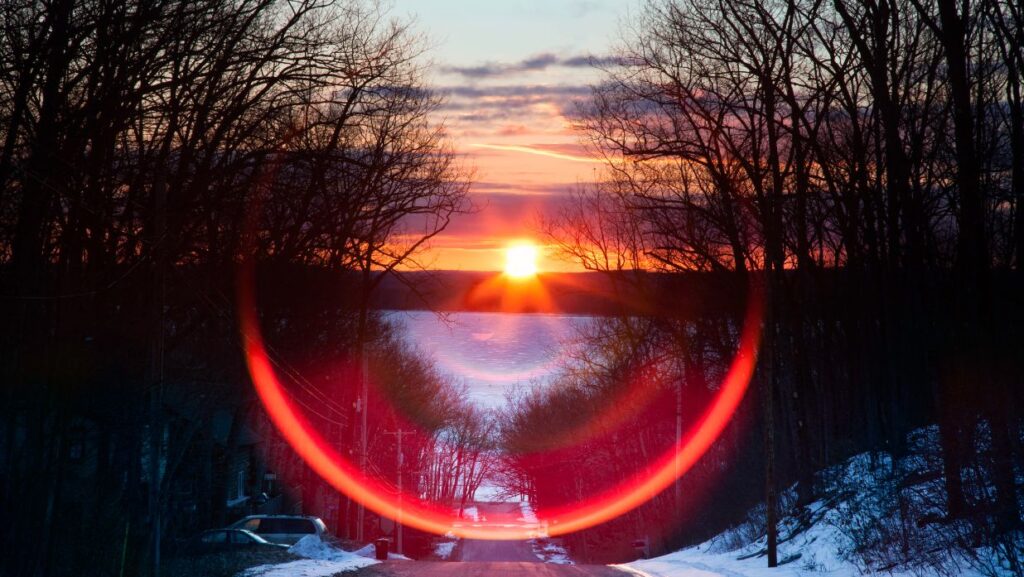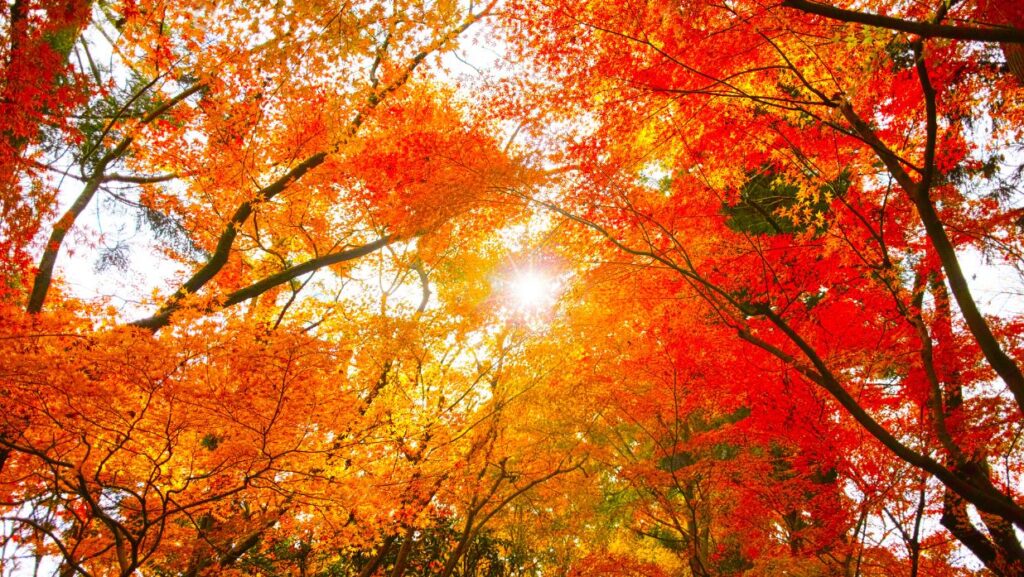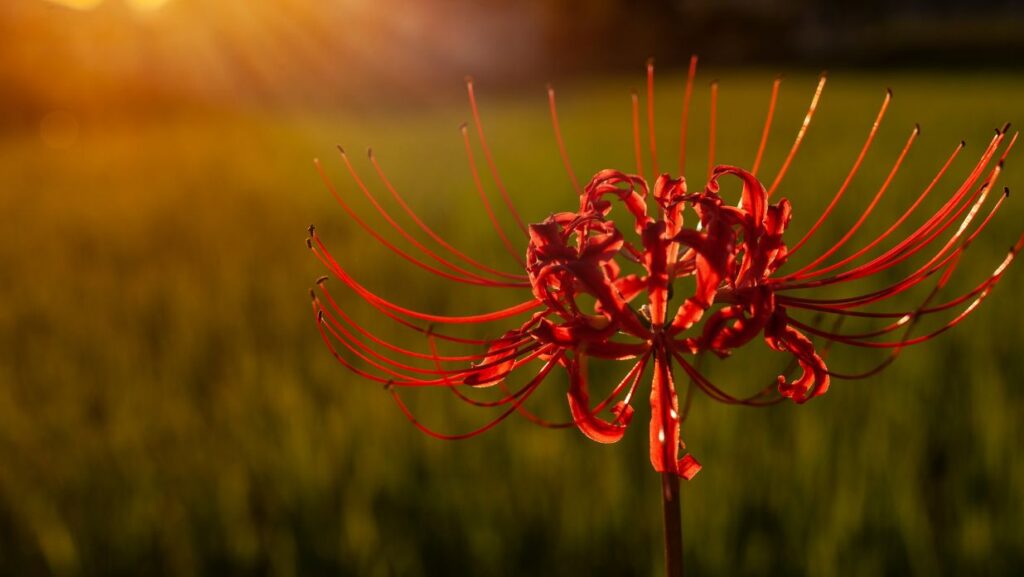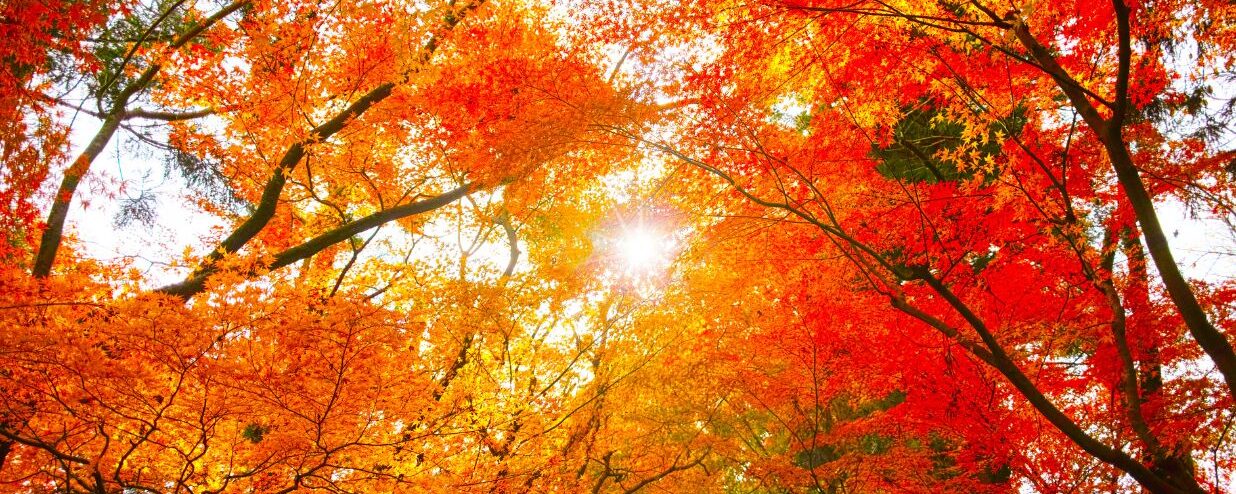Throughout the year, the balance between day and night is constantly changing. But as we progress through the seasons, twice a year, we will encounter points where equilibrium is reached between the two; both day and night will be equal.
For those of us in the Northern Hemisphere, the second ‘day-and-night equilibrium’ of the year is known as the Autumn Equinox. It occurs between September 22 and 23 and indicates the astronomical arrival of autumn. In Japan, this event is marked by the public holiday Autumnal Equinox Day, also known in Japanese as Shubun no Hi (秋分の日).
The months of September, October, and November are usually considered autumn, but what makes the autumnal equinox so significant? This blog will explore the Autumnal Equinox holiday in Japan, including its history, traditions, and meaningful ways to celebrate this astronomical event.
When Exactly is Japan’s Autumn Equinox?
The Autumn Equinox generally occurs when the sun passes over the equator from the Northern Hemisphere to the Southern Hemisphere. In Japan, Autumnal Equinox Day (Shūbun no Hi) is a national holiday that officially marks the start of autumn. It coincides with the autumnal equinox, when the sun is directly above the Earth’s equator and day and night are nearly equal in length. This occurs twice a year, with the southward equinox in September as the sun appears to move out of the Northern Hemisphere.
Autumnal Equinox Day is observed on September 22 or 23, giving the whole country a day off to celebrate with both traditional and modern customs. On this day, the sun rises exactly in the east and sets exactly in the west. In 2024, the holiday falls on September 22, and in 2025, it falls on September 23.
What is an ‘Equinox’

The word equinox comes from Latin, meaning ‘equal night’. Although contrary to popular belief, the lengths of day and night are not exactly equal.
The first equinox of the year occurs in March and is called the Vernal Equinox, which indicates the end of winter and the start of spring. Japan also celebrates the vernal equinox with a national holiday, Vernal Equinox Day.
Meaning of Shubun No Hi
Autumnal Equinox Day in Japanese is called Shubun No Hi (秋分の日). The Japanese name 秋分の日 (Shuubun no Hi) can be understood by looking at each component. The first character, 秋 (Shuu or Aki), means “autumn,” indicating the season in which the holiday occurs. The second character, 分 (Bun), literally means “division,” but in this context, it refers to the equinox, the time when day and night are nearly equal. The particle の (No) functions like the English word “of,” connecting the first part of the phrase to the last. Finally, 日 (Hi) means “day.” Put together, 秋分の日 literally translates to “Day of the Autumn Equinox,” capturing both the seasonal and astronomical significance of the holiday.
When is the Autumn Equinox?
The date of Shubun no Hi (Autumnal Equinox Day) happens on either September 22 or September 23. The date changes slightly each year because it is based on astronomical calculations, not a fixed calendar date.
The equinox occurs at the exact moment when the Sun crosses the celestial equator, moving from north to south. This precise moment doesn’t fall at the same time on the calendar each year because a year is not exactly 365 days. It’s approximately 365.24 days. To keep the calendar in sync with the Sun, Japan uses the Gregorian calendar with leap years. The extra day every four years shifts the equinox slightly on the calendar.
Check out the schedule for Japan’s Autumnal Equinox Day from 2025 until 2030!
| Year | Date | Day |
|---|---|---|
| 2025 | September 23 | Tuesday |
| 2026 | September 23 | Wednesday |
| 2027 | September 23 | Thursday |
| 2028 | September 22 | Friday |
| 2029 | September 23 | Sunday |
| 2030 | September 23 | Monday |
How Did the Autumn Equinox Holiday Start?

Japan, along with other nations, has celebrated the Autumnal Equinox for centuries, though it has not always been an official holiday.
Japan, like many other countries, has observed the Autumnal Equinox for centuries, though it has not always been an official holiday. While the day became a public holiday in 1948, people had been celebrating it long before, originally as Shuuki Koureisai, a Shinto and Buddhist observance. There were two such holidays: Shun-ki Kōreisai in spring and Shuuki Koureisai in autumn, corresponding to the two equinoxes. During these ancient celebrations, people visited ancestral graves, Shinto shrines, and Buddhist temples.
The autumnal equinox was first recognized as a national holiday during the Meiji period (1868–1912). The 1878 observance honored past Japanese emperors, royal family members, and the spirits of deceased relatives.
Japan, along with other nations, has celebrated the Autumnal Equinox for centuries, and it has been a national holiday since the Meiji period. Yet, the well-established roots of this holiday – originally called Shuki Koreisai – are believed to stem from Shintoism and Buddhism.
In addition to the seasonal significance of the Autumnal Equinox, this holiday also paid tribute to the spirits of deceased relatives and Japanese Emperors. However, after WWII, the government separated religion from the state through the post-war constitution and the day was rebranded as a non-religious holiday.
Today, Autumnal Equinox Day is mainly a secular holiday. Many Japanese people use it as an opportunity for consecutive days off, and in years when it falls near Respect for the Aged Day, it can create a “Silver Week,” a rare extended holiday period.
Ways to Celebrate Autumnal Equinox Day in Japan
Yes. Despite the rebranding of the holiday, the religious significance of Japan’s Autumn Equinox still remains. Following both the autumnal and vernal equinoxes is the Buddhist holiday Ohigan, which literally means “the other shore”. This “other shore” is linked to enlightenment, and thus, this holiday is connected to six practices (paramitas) that are believed to lead to it: generosity, morality, perseverance, concentration, meditation, and wisdom.
These Japanese holidays often overlap, as Ohigan is a seven-day observance that starts three days before the equinox and ends three days after. During this period, people hold family gatherings, visit ancestral graves, and pray at shrines and temples. Many people return to their hometowns to celebrate with their families. In Buddhist tradition, the equinox is considered a time when the boundary between the living and the dead is at its thinnest, making it an especially meaningful occasion.
People also celebrate the good weather and autumn harvest by enjoying outdoor activities and eating Shibun no Hi snacks such as botomachi – a ball of sweet rice in azuki paste. The dish is traditionally thought to protect against evil and misfortune. Its name, “ohagi,” comes from the hagi flower.
How You Can Commemorate the Autumnal Equinox in Tokyo
Perhaps the best way to spend this time is to express gratitude to loved ones who have passed over. As per the tradition, if you have ancestors in Japan, you could tend to their graves. If not, you could ask friends if they would like any support from their families.
1. Search for higan-bana

A popular autumn tradition in Japan is seeking out higanbana (red spider lilies), which bloom around the time of the autumnal equinox. These vibrant red flowers are often found near temples, graveyards, and rice fields. They are closely associated with Ohigan and the equinox period, symbolizing the cycle of life and death. Families often take walks to admire these flowers, reflecting on ancestors and the transient beauty of nature.
2. Visit a nearby temple
While September might be too early to see the autumn foliage in Japan, during this time, popular temples like Senso-ji might be packed with both travellers and Japanese people paying a visit. Look for temple festivals near your home. Or visit one of the quieter temples such as Yuten-ji, Kotoku-ji or Zojo-ji.
3. Visit a garden
Observe the last of summer by taking a trip to a peaceful garden such as Higo-Hosokawa, San-keien (Yokohama) or Koishikawa Korakuen.
4. Honor the moment
Pay tribute to the six Mahayana Buddhist paramitas: give more to someone than you need to (generosity), start reading the book that’s been sitting on your shelf for too long (wisdom), and meditate for 10-minutes at one of the temples above (meditation), tell someone the truth about something bothering you or listen to someone who needs to talk (morality), spend time on a personal project (perseverance), or just turn off your phone for a while and give all of your attention to something or someone you love (concentration).
What’s Next After Autumnal Equinox?
While Japan is known for its cherry blossoms in the spring, autumn foliage is an equally beautiful sight — but, sadly, not as well known. Momijigari (紅葉狩り), which literally means “red leaf hunting” or “maple leaf hunting”, is a custom of admiring the changing colors of leaves to vibrant red, brown, yellow, and orange during fall in Japan. It has been practiced for centuries by the Japanese people, drawing inspiration for artists and poets.
Check out the best spots for Momiji viewing in Japan here.
Interested in learning more about the Japanese language and culture? Start taking Japanese lessons with us!
One of the best ways to truly appreciate Japanese culture is by learning the language! Now, you can learn Japanese with fun, flexible lessons at Coto Academy, Tokyo and Yokohama’s leading Japanese language school.
Whether you’re interested in intensive courses or part-time lessons, Coto Academy offers small classes of just 8 students, providing professional tutoring from expert native teachers. Immerse yourself in the language and culture while enjoying a personalized learning experience. Ready to get started?
Fill out the form below for a free Japanese level check!
FAQ
What is the Autumnal Equinox?
The Autumnal Equinox, known in Japan as Shuun no Hi (秋分の日), is the day when day and night are approximately equal in length. It marks the transition from summer to autumn in the Northern Hemisphere.
When is it observed in Japan?
Shuubun no Hi is a national holiday in Japan, usually observed on September 22 or 23, depending on the year. The exact date varies slightly due to astronomical calculations.
Why is it a Autumnal Equinox Day a national holiday?
The holiday was established to honor ancestors and pay respects to the deceased. It is also a time to appreciate nature and the changing seasons. People often visit family graves and temples to offer prayers and flowers.
What happens on Autumnal Equinox Day in Japan?
On Autumnal Equinox Day (Shūbun no Hi, 秋分の日), people in Japan:
- Visit family graves (ohakamairi) to clean them and offer flowers, incense, and food to honor ancestors.
- Appreciate nature by enjoying the changing seasons, especially the autumn foliage.
- Reflect on life and balance, as the equinox symbolizes the day and night being nearly equal.
- Enjoy seasonal foods like rice, chestnuts, persimmons, and other autumn treats.
It is a time for family gatherings, remembrance, and observing seasonal change, blending both spiritual and cultural traditions.
Is the equinox a holiday in Japan?
Yes, the Autumnal Equinox Day is a national holiday in Japan. It is officially recognized as a day to honor ancestors, appreciate nature, and reflect on life. Schools, banks, and most businesses are closed, making it a widely observed public holiday.
Visiting Japan this autumn? You might be interested in reading:
